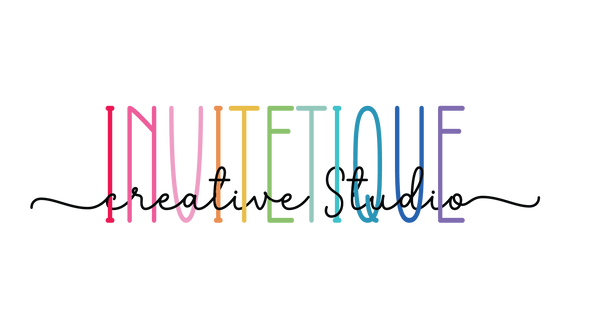Where to Print Digital Files & Instant Downloads
Know the Basics of Color
Computer screens interpret color in RGB mode, while printers interpret color in CMYK mode, thus there will always be slight variances between colors you see on screen and how they appear printed. Typically, colors always appear less vibrant when printed. Output devices complicate the printing process even further, as different devices are configured to interpret color in different ways.
In other words, two different printers could print the exact same file, but the resulting piece will look different because of the way each printer's equipment is configured. Oh, and the type of paper you opt for also affects the results!
Bleed
Bleed is the industry term for any color or image that extends to the edge of the paper. If you don't want white margins around your design, ask the designer to include bleeds when placing your order.
What actually happens is that the design extends .125" beyond the edge of the page, and that excess image or color is then cut off during the binding or finishing process. If you don't account for bleeds (but expect the design to extend all the way to the edge), you may risk inconsistent margins or skewed dimensions.
When placing your order, let the designer know how you plan to print these files, as this will affect how the files are packaged and sent to you. The general rule of thumb is that if you're printing at home or at an office supply store, you won't need bleeds. If you're uploading your files to an online printing shop or using a local professional printer, then you'll need bleeds.
Not All File Types are Created Equal
The most common file types are JPEG and PDF. At Invitetique, all instant downloads include one high-quality PDF and one JPEG file saved at 300 dpi.
So what is the difference?
The JPEG file format is typically reserved for photographs – not digital art or designs containing text. Unfortunately, JPEG tends to be the most requested format, mainly because the average buyer is not very familiar with the design and printing process.
PDF, on the other hand, does not rasterize text and graphics like JPEG does, which allows for a more clean and sharp image. For this reason, PDF is the best choice when ordering invitations, stationery, prints, etc.
In that case, why include a JPEG? Well, say you want to upload your invitation to Facebook and tag the fabulous designer who created it... Or you want to post your Invitetique order on Instagram with the hashtag #Invitetiquepr. Social media rejects PDF documents, so that's where a JPEG comes in handy!
Heavy Card Stock is the best alternativeThe only files that should ever be printed at a photo kiosk are photos – and even then the quality is questionable. Everything else requires matte card stock that is from 80 to 110 lbs.
Even in the event that you're ordering invitations with photos as part of the design, avoid the photo kiosk. For invitations or greeting cards with photos, I recommend the 80 lb. Silk Cover, which is coated but not glossy.
Printing Options
Basically you have four printing options:
1) an at-home color printer, if available
2) office supply stores like Staples or Fedex
3) online printing shops like Mpix.com or shutterfly.com, or
4) a local, professional printing shop.
Home color printers are clearly the least expensive option, but as a result, they offer the lowest quality.
If you're printing an invitation for an informal event like a child's birthday party, a home printer works just fine! A few tips: Save on paper using the two invitations on a standard 8.5 x 11 PDF which will be included with every order, make sure you're using matte card stock, and be sure to select "actual size" on your printer to preserve the original measurements of the file so as to not skew the quality.
If you're going the office supply store route, save your files to a USB drive and bring it to the nearest Fedex, Kinkos, Staples, etc. There you'll be able to pick out your desired paper, as well as review a sample before printing the entire batch. You'll be given the option to cut out the printed designs yourself, or the sales associate can do it for you for a minimal fee.
Online printing vendors are a slightly better option, as it offers slightly higher quality than home printers and office supply stores. The prices are fairly inexpensive, and no cutting or assembly is required. Plus, online printing shops offer more features, like printing double-sided invitations (something you will find nearly impossible to do on a home printer or at an office supply store) as well as using different printing processes. Just make sure you take into account the shipping time.
Using a local professional printing shop ensures the highest quality possible, and it's the option I recommend I highly recommend. Professional printers offer limitless features; plus, once again you'll have the option of reviewing a physical proof of your invitation before printing the entire batch. Generally, envelopes are included automatically, so that's one less detail to have to worry about. The cost may be slightly higher than the other options, but the results are always worth it when you're working with professionals. I generally recommend all wedding-related files be printed at a professional printing shop.
